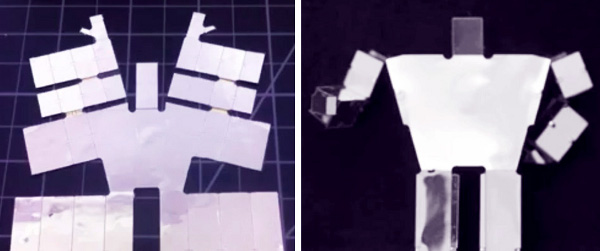
Experts at MIT have developed new algorithms and electronic components that could enable the creation of printable robots that self-assemble when heated.
Daniela Rus, the Andrew and Erna Viterbi Professor of Electrical Engineering and Computer Science at MIT, said that, once heated, the printable robotic components automatically fold into prescribed three-dimensional configurations.
Rus and her colleagues have detailed their discovery in two papers – one of which describes a system that takes a digital specification of a 3D shape, such as a computer-aided design, or CAD, file, and generates the 2D patterns that would enable a piece of plastic to reproduce it through self-folding.
The other paper explains how to build electrical components from self-folding laser-cut materials. The researchers present designs for resistors, inductors, and capacitors, as well as sensors and actuators – the electromechanical ‘muscles’ that enable robots’ movements.
Rus said: "We have this big dream of the hardware compiler, where you can specify, ‘I want a robot that will play with my cat,’ or ‘I want a robot that will clean the floor,’ and from this high-level specification, you actually generate a working device.
"So far, we have tackled some sub-problems in the space, and one of the sub-problems is this end-to-end system where you have a picture, and at the other end, you have an object that realises that picture. And the same mathematical models and principles that we use in this pipeline we also use to create these folded electronics."
Both papers build on previous research that Rus did in collaboration with Erik Demaine, another professor of computer science and engineering at MIT. This work explored how origami could be adapted to create reconfigurable robots.
The key difference in the new work, according to Shuhei Miyashita, a postdoc in Rus’ lab and one of her co-authors on both papers, is a technique for precisely controlling the angles at which a heated sheet folds.
Miyashita sandwiches a sheet of polyvinyl chloride (PVC) between two films of a rigid polyester riddled with slits of different widths. When heated, the PVC contracts, and the slits close. Where edges of the polyester film press up against each other, they deform the PVC.






